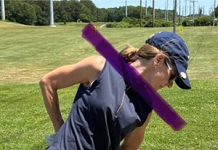We live in an age where information is just a click away… But is it the right information…or is it a trap?! Everyone knows that no two swings on the professional tours are the same, so why would you adopt the same technique as the next person and assume it’s the correct way to swing for both of you?
Research suggests there are very few “universal” moves that everyone must do in their golf swing. The key to swing success is navigating through the vast sea of information and finding the right individual moves that work with your physicality and abilities.
A prime example:
“Keep your head down, keep your eyes on the ball!” This may be the most common saying in all of golf and I’m here to tell you that it’s a trap! Keeping your head down may theoretically make sense, but if you dig deeper, you’ll find that it could invite the very thing you are trying to avoid: the dreaded top, or worse, a whiff.
Let’s go further. In the down swing we can recognize that there is a finite number of body parts actually leading the club in a downward direction, mainly the arms, hands, and a bit of the right shoulder. As we go through our acceleration process from the ground up (one of those universal moves) we notice that the arms need to extend out to the ball to amplify this speed and make contact with the ball.
But, if we lower the upper body too much, insisting that the head needs to stay down throughout the entire swing, we limit the room the upper body needs to extend and release the club. As a result, our subconscious immediately goes into protection mode, turning us into T-Rexes instead of golfers (think: short arms).
I enjoy a good viewing of Jurassic Park like the rest of us, but sadly T-Rexes don’t make good golfers! This is only one of a plethora of examples related to misinformation and the golf swing.
Mike Adams and Terry Rowles have a wonderful saying that we adopt here at Blue Rock Golf Course: “Measure, don’t guess.” How much should you actually stay down with your posture before and during the swing? That depends on things like the length of your arms. We interview, measure, and assess each golfer on an individual basis, creating each person’s unique “blueprint” for a repeatable and powerful golf swing.






